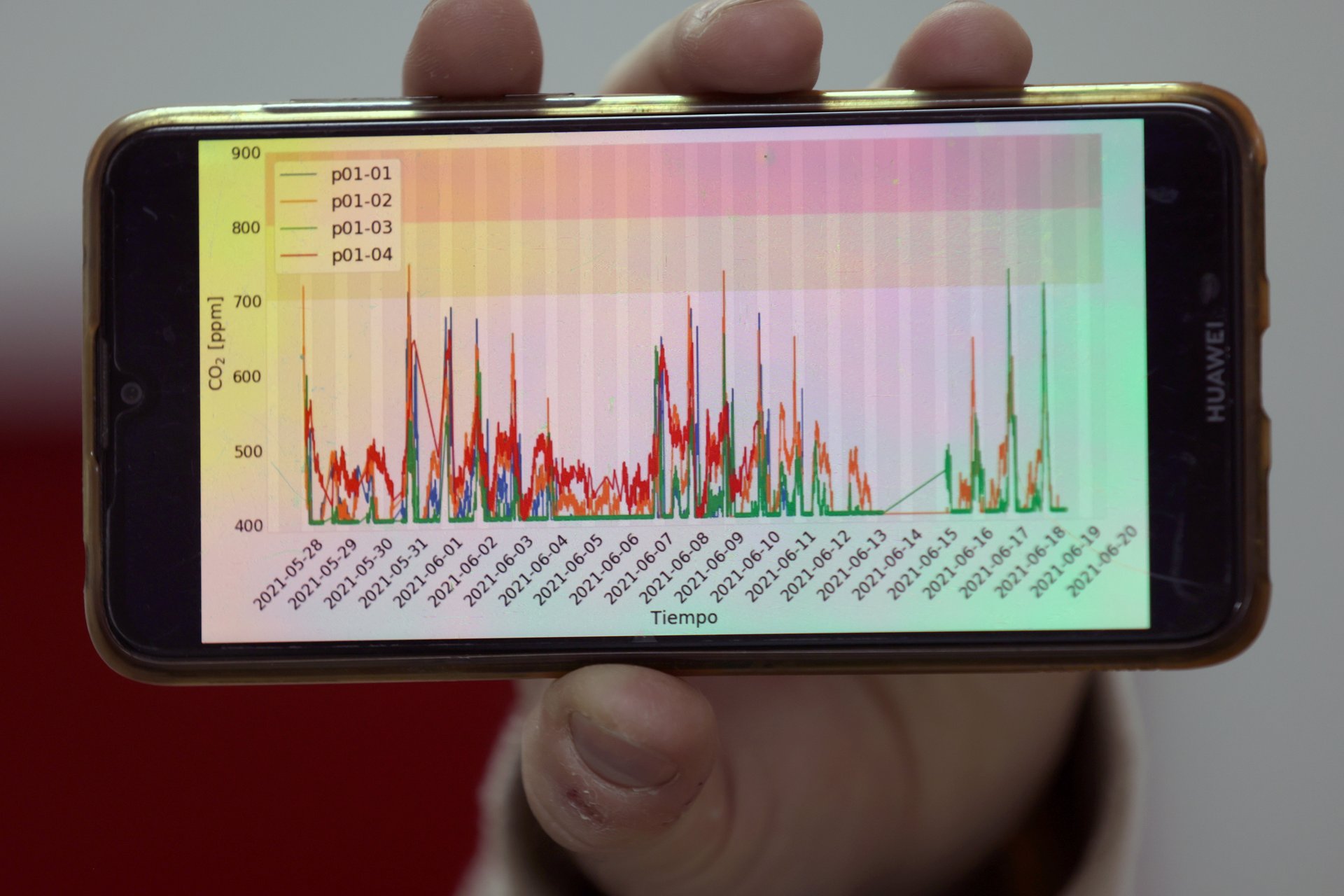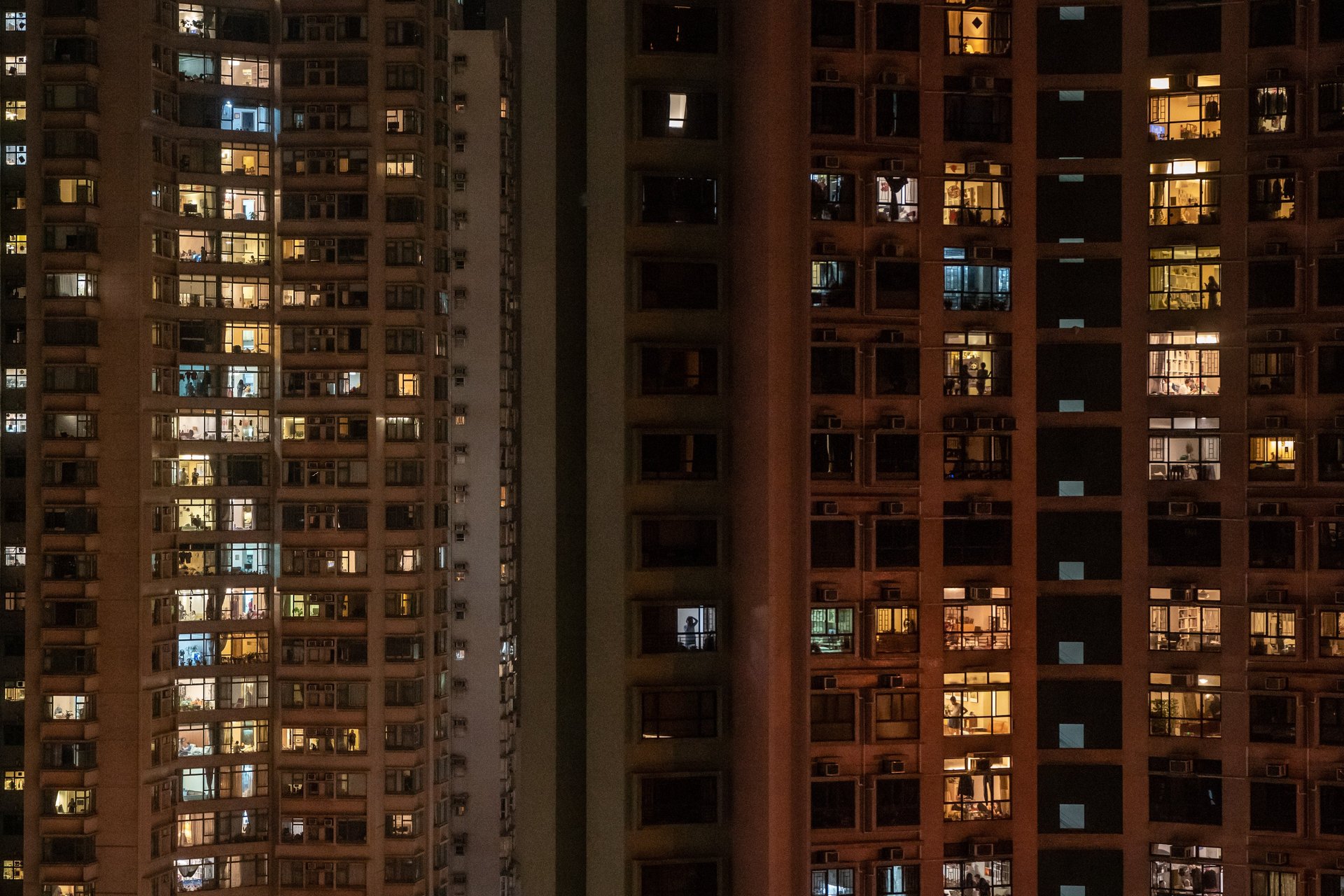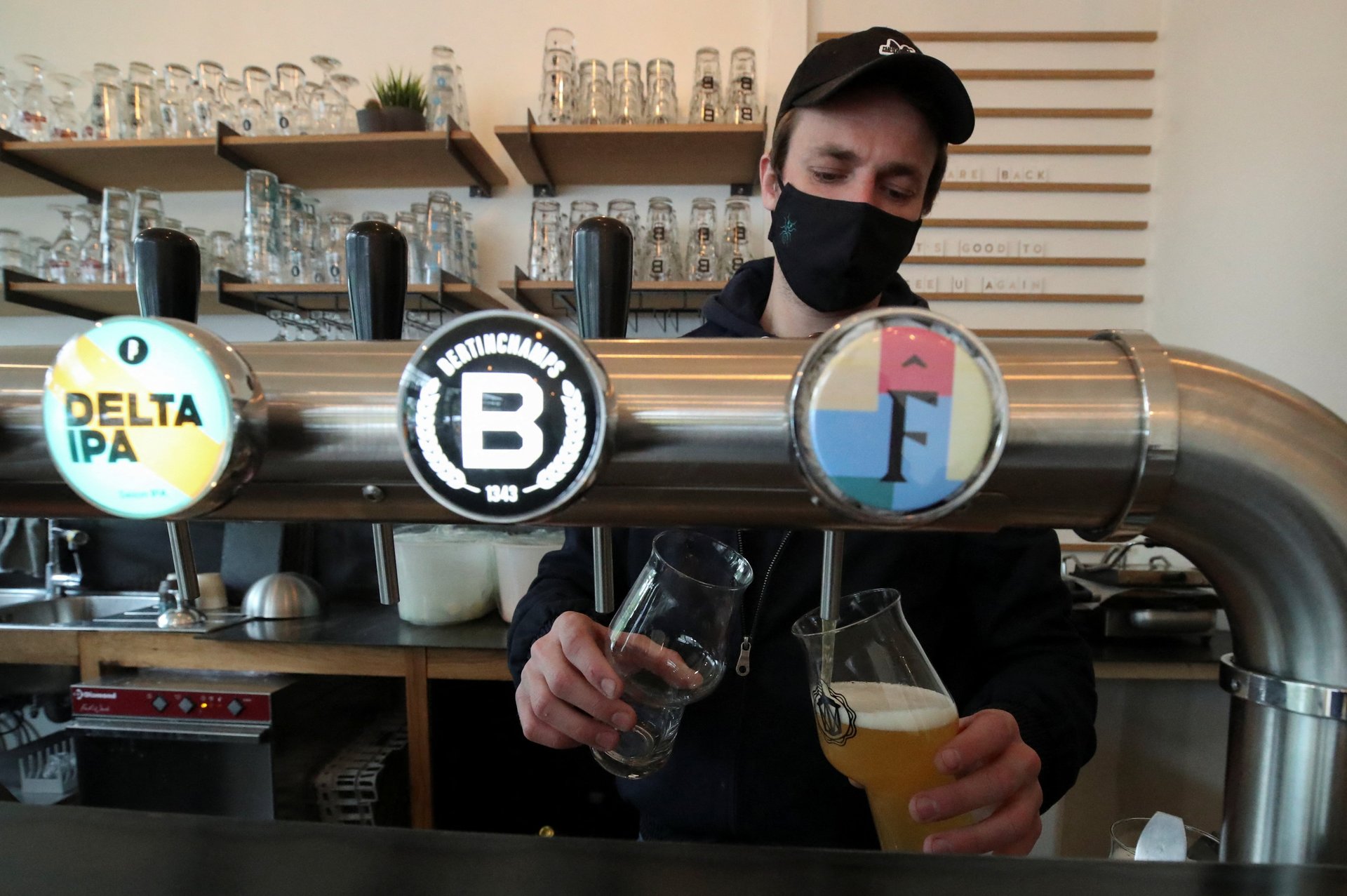How to tackle the global indoor air crisis
Mandating real-time monitoring CO2 levels in public spaces and transportation could improve indoor air quality

Air. It’s everywhere. It’s invisible. And frequently it’s so full of germs and particles that some call air “the new poop.”
Suggested Reading
Indoors, it’s hard to quickly assess whether the air you’re breathing is clean or not. But determining that could have made people less sick during the pandemic. “The COVID-19 crisis is almost certainly an indoor air crisis; it is very likely a ventilation crisis,” Yuguo Li, a professor of mechanical engineering at the University of Hong Kong, and his colleagues wrote in the journal Indoor Air in late 2021.
Related Content
In the US, new ventilation targets emerged last week, thanks to a US Centers for Disease Control and Prevention guidance as well as a draft industry standard (pdf) from the Association of Heating, Refrigeration, and Air-conditioning Engineers (ASHRAE). These targets aim for the kind of ventilation that can lower the risks posed by infectious pathogens. But setting targets is one thing. Putting them into practice is a whole different ball game.
There’s no one-size-fits-all solution to indoor air
One major challenge is reconciling a building’s energy efficiency and its indoor air quality. In places where outdoor air is very cold or very hot, pumping large amounts of it into indoor spaces could then require even more energy to heat or cool the building accordingly. “We don’t want to solve one problem by making another one worse,” Li said.
Different places also have drastically different built environments. In a subtropical location like Hong Kong, for example, the vast majority of homes are sealed apartments with no heating, ventilation and air conditioning (HVAC) systems to circulate air. That’s fine during temperate months of the year, when windows can be left wide open, but it poses a ventilation problem when windows are shut to keep cool air-conditioned air in. By contrast, natural ventilation using wind and the “chimney effect” of rising hot air works best in a city like Bengaluru, with a dry climate and moderate temperatures, and is more energy-efficient than mechanical ventilation systems.

Hong Kong’s population density also means tall buildings have to be engineered to mitigate the vertical spread of infectious diseases—an issue that standalone homes don’t have to deal with.
Setting a unified standard that covers such high variabilities in climate and built environments is difficult. There’s no one-size-fits-all solution, said Joey Fox, a heating, ventilation and air conditioning systems (HVAC) engineer based in Canada and chair of an advisory group on indoor air quality.
Should governments mandate CO2 monitoring in buildings?
Among the low-hanging fruit in this field is the monitoring of carbon dioxide levels. These levels serve as a proxy for how frequently fresh air is pumped into a space to replace exhaled air. A room with lower CO2 readings poses lower risks of spreading germs, because any pathogen-laden air breathed out by an infected person is replaced more quickly with clean air than in a poorly ventilated room
Li wants to see governments mandate real-time monitoring and display of CO2 levels in public spaces and transportation.“That’s a first step the world should take,” he said. “Without measurement, forget about discussion, you don’t know what’s going on.”
Displaying CO2 details also gives people more information with which to assess risks and adjust their behavior. Consider, for example, a diner walking into a restaurant, seeing a CO2 reading of 1,300 parts per million (ppm)—far above the 800 ppm level considered to represent good ventilation—and deciding to eat somewhere else.
It is, in fact, possible to smell whether C02 levels are too high in a space you’ve just entered, said Li. Such spaces often feel stuffy or filled with odors. “If [the smell] is not so good, then you go away,” he said. But for those with less acutely tuned olfactory senses, CO2 monitors can help.
Belgium presents a test case for indoor air quality
One government is betting that requiring CO2 monitoring by law will have big public health payoffs. Belgium will soon become the first country in the world to mandate continuous monitoring of CO2 levels in public indoor spaces.
Last December, Belgium enacted a law regulating indoor air quality in enclosed spaces accessible to the public. The law states that, within a year of enactment, all operators of publicly accessible indoor spaces—restaurants, gyms, bars, and offices—must use an air quality monitor such as a CO2 meter.
“It is important to incorporate the experience, knowledge and expertise on indoor air quality and respiratory diseases gained during the Covid-19 pandemic,” notes the explanatory memorandum (pdf, link in Dutch) to the law.

And by 2025, operators of Belgium’s public indoor spaces will have to alert visitors to air quality levels. Just as food safety inspectors award visible certificates to restaurants, these spaces must display certification labels that show an official has determined them to have met the required standards.
The Belgian law currently sets two different (and, as of now, non-mandatory) indoor air quality targets that buildings should aim for: less than 900 parts per million (ppm) of CO2 in a room, meaning that CO2 comprises less than 0.09% of the room’s air; and less than 1,200 ppm of CO2.
And it’s not just at the national level where CO2 monitoring can become part of standard practice. This coming September, the public school board in the Canadian city of Waterloo will pilot a program to track CO2 levels in classrooms.
“It’s really the best tool we have,” Fox said of CO2 monitoring. “It’s not the perfect tool, but it’s the best tool.”
